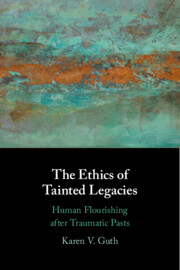Refine search
Actions for selected content:
3 results
Afterword
-
-
- Book:
- Genes, Environments, and Differential Susceptibility
- Published online:
- 04 September 2025
- Print publication:
- 18 September 2025, pp 259-266
-
- Chapter
- Export citation
Atypical hemispheric lateralization of brain function and structure in autism: a comprehensive meta-analysis study
-
- Journal:
- Psychological Medicine / Volume 53 / Issue 14 / October 2023
- Published online by Cambridge University Press:
- 17 February 2023, pp. 6702-6713
-
- Article
- Export citation

The Ethics of Tainted Legacies
- Human Flourishing after Traumatic Pasts
-
- Published online:
- 07 July 2022
- Print publication:
- 28 July 2022
